
Logan and Albert Conservation Association

 Do not believe any of what you hear about the negative impact from the carbon price. Those using the word tax do so to misdirect your understanding of the situation. The government website explains quite clearly how it is using money paid by BIG POLLUTERS to offset any impact on low income and many higher income families. Scams and deceit unfortunately are part of today's society but ACCC has set up a help desk and hotline 1300 303 609. If you believe that false claims are being made use the ACCC HOTLINE or webforms found from this page.
Do not believe any of what you hear about the negative impact from the carbon price. Those using the word tax do so to misdirect your understanding of the situation. The government website explains quite clearly how it is using money paid by BIG POLLUTERS to offset any impact on low income and many higher income families. Scams and deceit unfortunately are part of today's society but ACCC has set up a help desk and hotline 1300 303 609. If you believe that false claims are being made use the ACCC HOTLINE or webforms found from this page.
The Australian Competition and Consumer Commission has developed a guide to help businesses understand their responsibilities when making claims about the impact of a carbon price. It focuses on prohibitions against misleading, deceptive or false claims under the Australian Consumer Law.
http://www.cleanenergyfuture.gov.au/helping-households/
1 Million Women is a campaign of daughters, mothers, sisters and grandmothers all committed to protecting our climate, our communities and our future, leading change for the better. Their goal is to inspire 1 million Australian women to take practical action on climate change by cutting 1 million tonnes of carbon dioxide (CO2), the main greenhouse pollutant causing global warming. Every woman who joins has a personal goal to cut 1 tonne of CO2 from their daily lives within a year of joining the campaign.
Click on the image to go to 1 Million Women website and learn t over 50 different ways to cut CO2 pollution from household, food, transport, flights, shopping.
Citizens and government are working together to reduce our emissions to have a cleaner world.
We could be better off we stopped subsidising use of fossil fuels. Our taxes currently provide enormous subsidies to the coal industry and we don't yet count the cost of health issues arising out of coal and coal power generation. In terms of questionable costs to consumers, each taxpayer currently pays an average of $180 per year in the form of diesel fuel subsidies for the mining industry - in essence, each of us handing over an annual payment of $180 straight into the capacious pockets of the likes of Gina Rienhart and Clive Palmer. Consumers might prefer to see this money used in a better way.
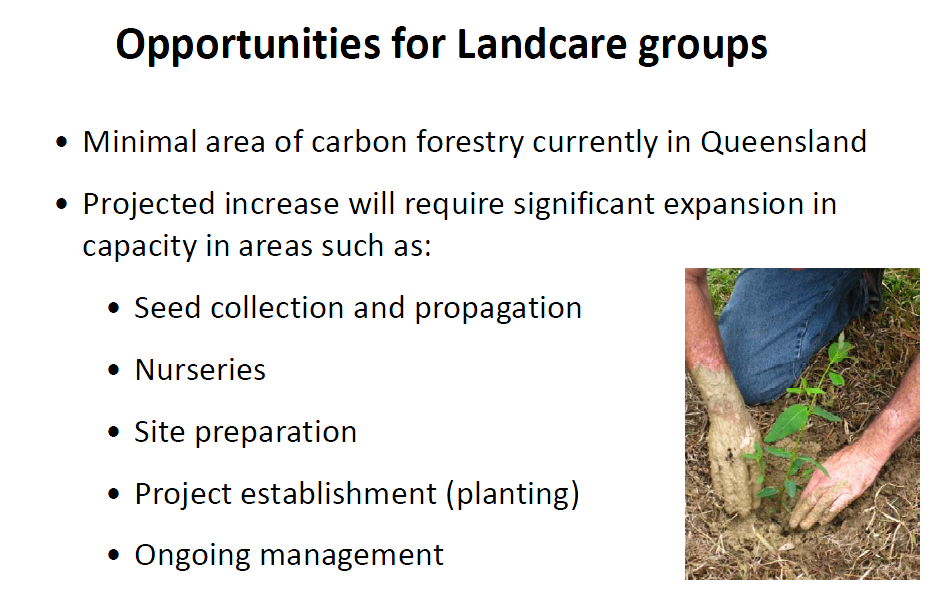
Carbon price scheme is not a tax: It is an emissions trading scheme with a fixed price for the first three years to enable industry and institutions to set up for the market stage. The level of emissions is set by government up front, and the market then responds.
How the carbon price will operate: In the Australian scheme, only the top 500 or so polluters (ie those emitting greater than 25000 tonnes of CO2) will pay the fixed price (starting in 2012 at $23 per tonne CO2 emissions.) Under the fixed price carbon policy, each large polluter must purchase one permit for every CO2 equivalent emitted. It will be able to purchase these permits from the government at a fixed price. This works like an emissions trading scheme, except the price is fixed by the government for three years to allow industry and business to 'tool up' before the market begins takes over determining the price. 50% of the amount paid by the major polluters will be directed towards compensating households for any small costs passed on.
Funding directly associated with the Carbon price: In addition to compensating 9 out 10 households for any flow-on costs, the carbon price scheme will provide for the establishment of the Biodiversity Fund ($946 million), the Carbon Farming Futures (management practices $429 million) and the Carbon Farming Initiative (opportunities for farmers through carbon offsets), $10 billion in a new commercially-oriented Clean Energy Finance Corporation (CFEC) and a range of other support services and programs.
Aim of the carbon price: The carbon price scheme is aimed at putting downward pressure on fossil fuel use over time in our economy. Australia produces about 500 million tonnes of carbon pollution each year, making it one of the top polluters in the world per head of population. Currently, polluting is free. With the introduction of the carbon price scheme, industry must factor in the cost of carbon pollution in their business, just as they factor in materials and labour. The carbon price is actually a recognition of the need for industry and business to pay for 'externalities', where these affect the community and future generations.
The real question for each country, including Australia, is what is the appropriate policy to move the country into a world of new, non-carbon polluting technologies, and keep the country competitive in an environment in which all of our major trading partners are pricing carbon?
 A new development application has been lodged by Teviot Downs Estate Pty Ltd on the same land as the previous application. This time the application is for 1017 Lots with a total of 1054 dwellings and an anticipated population increase of 2635 people in these initial stages. Their ongoing plans is for 1400 dwellings with 3500 people.
A new development application has been lodged by Teviot Downs Estate Pty Ltd on the same land as the previous application. This time the application is for 1017 Lots with a total of 1054 dwellings and an anticipated population increase of 2635 people in these initial stages. Their ongoing plans is for 1400 dwellings with 3500 people.
Although another planning group has prepared the application all of our previous concerns remain - and possibly more.
Jimboomba Times ran an article on the page 18, regarding the "new" proposed development for Greenbank. Can we ask all of you to please read this article, and reply back to Save Greenbank (This email address is being protected from spambots. You need JavaScript enabled to view it.) with your disapproval letter?
The SAVE GREENBANK COMMITTEE will collate all letters when meeting with all our local politicians: Ian Rickuss, and Michael Pucci (member for Logan) and Cr Trevina Schwarz Division11.
In the Year for Sustainable Development, and by an applicant touting corporate social responsibility it is disappointing that the application has NOTHING to commend its sustainability - except perhaps the financial gains of the developer if this DA is approved. See DA at ULDA website
Proposed Development permit is for material change of use for house, multiple residential, community facility, and utility installation, and reconfiguring a lot (1 into 1017 residential lots, 1 community lot, 1 utility installation lot, 8 balance lots, new road and park).
See the plan here. If you live anywhere in the former Beaudesert area and changes in density to original application will impact on your lifestyle and your values and appreciation for the natural environment.
SEVERE IMPACT on local wildlife without any infrastructure to help local species to survive is a major concern for LACA. The associated costs for wildlife trauma are paid by individual wildlife carers.
 Australia's most at-risk populations of koalas (Phascolarctos cinereus) – those in Queensland,New South Wales and the Australian Capital Territory - are now protected under national environment law. These FAQs have been developed to inform industry, developers, landholders and landowners.
Australia's most at-risk populations of koalas (Phascolarctos cinereus) – those in Queensland,New South Wales and the Australian Capital Territory - are now protected under national environment law. These FAQs have been developed to inform industry, developers, landholders and landowners.
CLICK ON IMAGE to read about the listing and associated reports from federal government. After considering scientific advice from the Threatened Species Scientific Committee, Environment Minister Tony Burke has listed the Queensland, New South Wales and Australian Capital Territory koala populations as vulnerable under national environment law.
The world is watching us in Australia to see whether we as a people, a nation, can save our iconic koala from extinction in all its local habitats. Unfortunately while we have many carers and wildlife support systems to rescue injured and sick koalas and save many to be rehabilitated there are as many individuals businesses and corporations that do not respect the values of habitat for wildlife - insisting that the financial costs of accommodating koala habitat is not an option.
The Australia government's declaration of partial protection under the EPBC Act is a small and hard won victory for the local and global conservation movement. 95% of South East Queensland's natural koala habitat is now gone as a result of land clearing that's making way for new urban dwellings to keep up with what is Australia's fastest growing region. Operation bulldozer has been in place and our new state government under leadership of Campbell Newman is not happy with federal legislation slowing down development in Queensland.
Referral to the federal environment minister however will only be required if a development or action is likely to result in a significant impact to koala populations or their habitat. This is guided by relevant EPBC Act Significant Impact Guidelines, including specific Koala Significant Impact Guidelines which are currently being prepared.
Every species requires food to survive and for the koala their diet is restricted to a narrow range of eucalyptus trees. Not all gums are a food source and even koalas have their favoured trees - developed from the supply in their home range. The legislated requirement to return koalas their home range is a challenging one as ever more habitat has been cleared for human housing and asociated services or infrastructure.
May edition of National Geographic magazine feaures the hazards of being a koala in South East Queensland and the dedication that some of our koala heroes provide to rescue as many koalas as possible. Extracting a koala from barbed wire fencing in dark early hours of morning, scaling tall trees to monitor koala movement and sharing one's house with recouperating koalas are some tasks gladly tackled - and freely - to help our endangered koala population. Deidre de Villiers is one of these people.
Learning to live in harmony with our local koalas - be they urban or rural is critical for their survival. LACA is firmly committed to the belief that this is not only possible but essential. Deidre was one of our speakers where we presented ways to work towards achieving this.
It is unfortunate that that sector of our community who see faster development as part of their business model feel threatened by new federal legislation. Our fast society - fast food, fast money, fast cars, fast development - does not connect with life in a slower lane where nature can be appreciated. We who connect with and care about the natural world and its species have an important role to play to rescue the koala from extinction. The determination of Debbie Tabbard of the Australian Koala Foundation, the community support for Australia Zoo and Currumbin Wildlife Sanctuary in Queensland, the many nameless volunteers carers, landcare groups, organic farmers, scientists and researchers has been rewarded with federal legislation as a first real step to slowing the road to extinction.
As caring citizens we need to be watchdogs for compliance. We have also to network in our local communities and with local and state government agencies to create a better understanding of the value of biodiversity and functional healthy ecosystems.
Mr Burke's announcement includes some small but inadequate funding. The video clip linked here alerts us to the unsatisfactory "solution" of offsetting to allow a development to proceed. To date LACA's experience of offsetting has not occurred in local area concerned, has not benefited endangered target group and has not improved any corridors to allow koalas to move independantly. In addition if such offset are nor established pre-clearing they will not be a viable food source for the endangered local koalas.
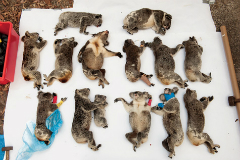 The Australian icon - the koala - is on the brink of extinction in its native bushland habitats. National Geographic photographer Joel Sartore took the photo shown in this article. Such a weekly death rate is unsustainable and will lead to the demise of our koalas outside of captive breed specimens in zoos - like China's panda bears.
The Australian icon - the koala - is on the brink of extinction in its native bushland habitats. National Geographic photographer Joel Sartore took the photo shown in this article. Such a weekly death rate is unsustainable and will lead to the demise of our koalas outside of captive breed specimens in zoos - like China's panda bears.
Koala populations that used to be vibrant and sustainable are facing local extinction. Inadequate government legislation is to be held acountable for this. Queensland has failed to do anything meaningful about the decline. Whether the newly elected government will improve the odds for koalas remains a question. The federal government needs to get involved and do it properly, listing the koala as vulnerable to extinction. Such a designation might save the last remnants of critical koala habitat. Without habitat to provide a local food source the plight of the koala is bleak.
A recent report presented to the Australian Senate made several recommendations to save the koalas, including
All are essential and critical. Meanwhile local koala care groups in eastern Australia struggle to rescue rehabilitate and release recovered animals. Legislation requires that the koala is returned to its home range - a challenging exercise when widespread clearing for human settlement has occurred - or mining. The efforts of grassroots koala emergency squads will always be essential but individual carers must also be supported for expenses incurred.
The more koalas we lose, the more valuable each rescued koala becomes. The May edition of National Geographic relates some of the extraordinary challenges faced and meet by koala rescuers carers and local research people such as Deidré de Villiers who shares her home with recovering adults juveniles or dependant joeys. You can read their story here. Deidre has presented at past Logan and Albert Conservation Association workshops about learning to live harmoniously with koalas and other wildlife. It is possible if we are prepared to make some adjustments to the way we currently go about our daily lives.
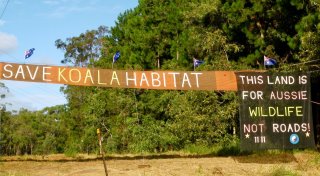 Full details of all candidates are available from Electoral Commission Queensland website here. For your convenience LACA has created this document
Full details of all candidates are available from Electoral Commission Queensland website here. For your convenience LACA has created this document ![]() LCC_Elections_2012_CANDIDATES.pdf
LCC_Elections_2012_CANDIDATES.pdf
The divisions of 4, 7, 9 and 11 have large areas of undeveloped busland which are home to many native animals and remnant bushland with significant plant species. Division 9 seat is not contested. Division 8 is also not contested. It is home also to some large acreage - see image - which will be destroyed should PARK RIDGE CONNECTOR be approved by the new state government.
Logan Country Chamber of Commerce have arranged a meet the candidate night at PUB LANE TAVERN for Wednesday 18 April 2012 for Disision 11 candidates.
This was to have been our LACA JIMBOOMBA MEETING night. However the exec have decided to forgo that meeting to allow residents to access which candidate they will vote for. LACA exec members will be at the Pub Lane Tavern forum.
Think carefully what you value about living in a rural residential area and access how each candidate will take your voice to council. All councillors have opportunity to vote on all issues [unless there is a conflict of interests]. It is important that those who become a Chair of Committee are willing to listen to residents from all areas and it is also important that councillors are familiar with all areas and divsions across Logan City - a challenge for some who live in suburban built up areas.
In our choices we should be looking to the future. How will who we vote for and what we ask impact on the future. LACA is not anti development per se but continuing as we have done in the past will not provide safe healthy environment for our children - or native species.
The multitude of roads being planned is scary. Council is unable to maintain what we have, how can we build more? If we continue to make no provision for safe wildlife movements - will we have any wildlife left? Already with the road maintenance and closures altering traffic wildlife carers are reporting more road trauma and death.
LACA is working with the NO PRC group to have Logan Council's decision to support this gateway extension tollway / mororway overturned. What candidates will assist us with this - understand the environmental consequences. You can follow group on Facebook as well.
We will hold our Beaudesert meeting as usual - see calendar. If you have any LOGAN issues you want to discuss please contact us - see contact page.
All are welcome to attend either or both monthly meetings and raise any issue that relates to any aspect of environmental protection and education.
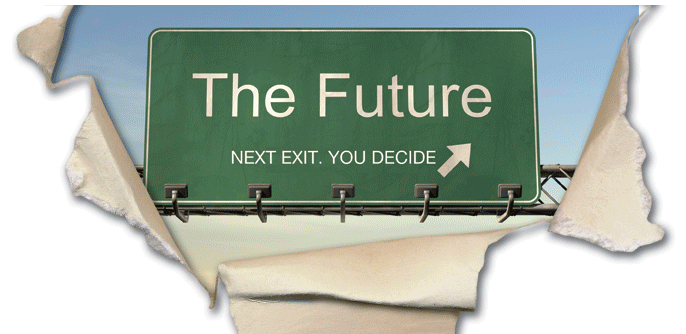
There are two main themes Green economy in the context of sustainable development and poverty eradication and the institutional framework needed.
Australia is a member state and you can see what our country has done here.
At a South East Queensland non government organization level LACA has participated at a FOSEQ (Friends of South East Queensland) workshop to present our concerns that will be taken to RIO. Several members of Australia's UN bodies also attended. There is a Queensland / Brisbane branch of the United Nations if you want more information or wish to become involved. FOSEQ is based on the principles of the UN Earth Charter.
Although an international conference might seem remote from us in SEQ Logan and Scenic Rim your thoughts and vision are wanted and internet makes that conversation quite easy. See what others have contributed already here and submit your own. Of course LACA would be delighted for you to tell us so that we can make a link on our website.
Sustainablity is the key term - what does it mean? It was first defined in 1992. Sustainability calls for a decent standard of living for everyone today without compromising the needs of future generations - a challenging goal. This writer agrees with the wise words of David Suzuki "We have failed to address the fundamental truth that endless growth is imposible in a finite world". In addition our human population is the elephant in the room.
A future worth choosing must be based on true costs to people and the environmentstate the UN's "Resilient People, Resilient Planet: A Future Worth Choosing" report
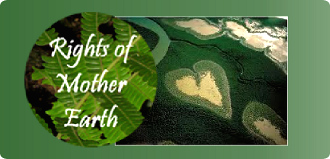 At times we humans feel threatened by some of our native animals and call for government to protect us from these creatures we cannot control. What can we control? Animals that are vulnerable to our physical strength suffer many inhumanities - based on inherited practices. Since 2008 laws in Queensland have protected threatened flying-foxes from being shot and electrocuted, requiring farmers to use non-lethal methods, such as netting, to protect their crops. But the Liberal National Party have said that if elected they will overturn these laws. This backwards step in animal protection may once again mean flying-foxes can be shot and electrocuted, causing widespread suffering and further threatening this dwindling species' numbers. Katter's Australia Party have also made some worrying statements about animal welfare.
At times we humans feel threatened by some of our native animals and call for government to protect us from these creatures we cannot control. What can we control? Animals that are vulnerable to our physical strength suffer many inhumanities - based on inherited practices. Since 2008 laws in Queensland have protected threatened flying-foxes from being shot and electrocuted, requiring farmers to use non-lethal methods, such as netting, to protect their crops. But the Liberal National Party have said that if elected they will overturn these laws. This backwards step in animal protection may once again mean flying-foxes can be shot and electrocuted, causing widespread suffering and further threatening this dwindling species' numbers. Katter's Australia Party have also made some worrying statements about animal welfare.
Inhumane practices extend to our companion animals and livestock that provide food. Life in the fast lane has distanced us fron nature - its ambience and tranquility, its free ecosystems sevices such as clean air, clean water, pollination of plants for beauty and food. A life of convenience comfort and pleasure - bought as cheaply as possible - is expected now by many.
2012 - the year of RIO+20 is a time for reflection of our values aspirations vision for the future - a sustainable future for both the human species and all other interdependant life. This global summit needs to matched at our own local and regional levels as we go about our daily lives - respecting and valuing all forms of life - biodiversity.
Admittedly some folk feel a colony of flying foxes may be noisy and somewhat messy, but others value the services provided - from pollinating our eucalypt trees to devouring thousands of small insects. We can not duplicate those services. Imagine an Australia without gum trees!
Fear of death from Hendra virus has been dramatised in the media and demonised the flying fox. In reality there are far greater hazards we contend with on a daily basis. In most instances managing our own human behaviours can reduce risks.
Our ever growing human population is placing a heavy burden on the world's resources. In Australia we have a species extinction rate which is embarrassing. Becoming well informed conscious consumers is everyone's responsibility. Learning to live lightly on the planet can only help to preserve its biodiversity.
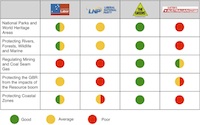 Queensland's environment organisations have compiled and released an election scorecard for the four main parties contesting the Queensland State Election.
Queensland's environment organisations have compiled and released an election scorecard for the four main parties contesting the Queensland State Election.
Whilst the Labor party is assessed as having better policies than the LNP on the protection of the environment, both major parties disappoint on two key matters concerning the State's sustainable future. The Green Party came out on top whilst Bob Katter's Australian Party scored better on mining but failed on most other counts.
Both major parties at this election are failing to meet their obligations on the regulation of mining and coal seam gas. The fate of Queensland hinges on this key issue. How do you run a resource economy without threatening agriculture, groundwater, local communities and essential environments such as the Great Barrier Reef World Heritage Area?
As a response to a GETUP petition, Anna Bligh today has just responded to 3876 emails from Queensland GetUp members, sent yesterday, with a new policy to protect the Bimblebox nature refuge and others like it from mining. In her letter to GetUp members, she wrote: "I can now confirm that Labor's policy would have the effect of ruling out mining in areas like the Bimblebox nature refuge."
What are your values for a sustainable future for Queensland? Make your vote count on election day. Having a say through the democratic election process is an essential part of being a responsible citizen.
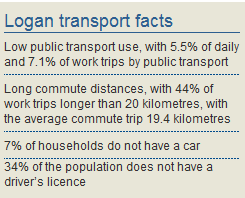
The following is part of LACA's submission to DTMR to object to both the decision to construct a six lane freight motorway impacting on significant wtland areas and also the method of "consultation" used to validate their decision.
LACA does not believe there is a viable corridor for the Park Ridge Connector Road because there are existing communities and environmental assets in the area proposed for the corridor. LACA has stated this position clearly since the beginning of the CSRG process and has continued to communicate this position at all times.
LACA is extremely concerned that the significant environmental issues are being ignored by Main Roads, despite LACA's ongoing communication of our environmental concerns since the beginning of the Community Stakeholder Reference Group or CSRG process. LACA has been particularly concerned that the biodiversity hotspot of Jerry's Downfall Reserve-Flesser Reserve continues to be targeted for an infrastructure corridor, when it is such a significant biodiversity area and bioregional corridor. LACA has also continued to voice its concern for the northern bioregional corridor of Karawatha – Greenbank-Flinders Peak ,Berrinba Wetlands and Scrubby Creek.
LACA believes that this consultation process has been deficient and members of the CSRG have communicated their concerns that they felt like they were being lead by Main Roads throughout the CSRG process. LACA is also very unhappy at the short consultation time frame given to the general community to peruse the EAIR document - ENVIRONMENTAL ASSESSMENT AND INVESTIGATION REPORT - and supporting evidence. LACA has continued to request an extension of time to this consultation from the beginning of the public display period